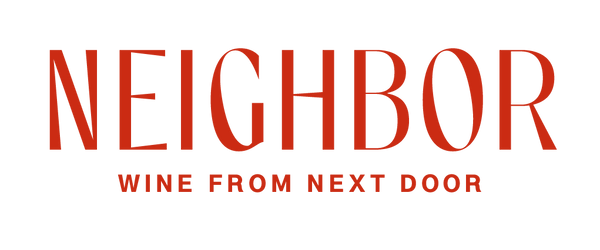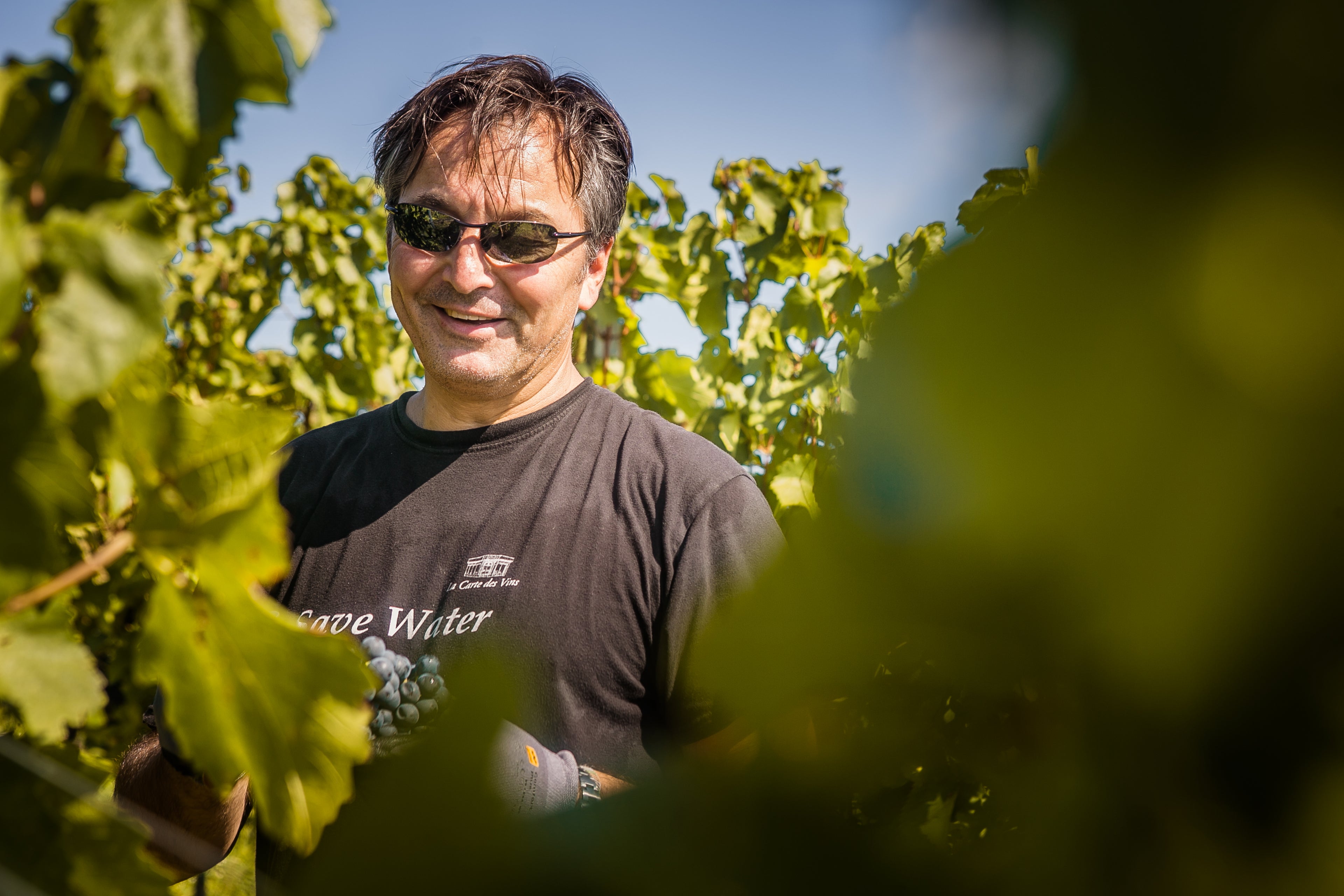
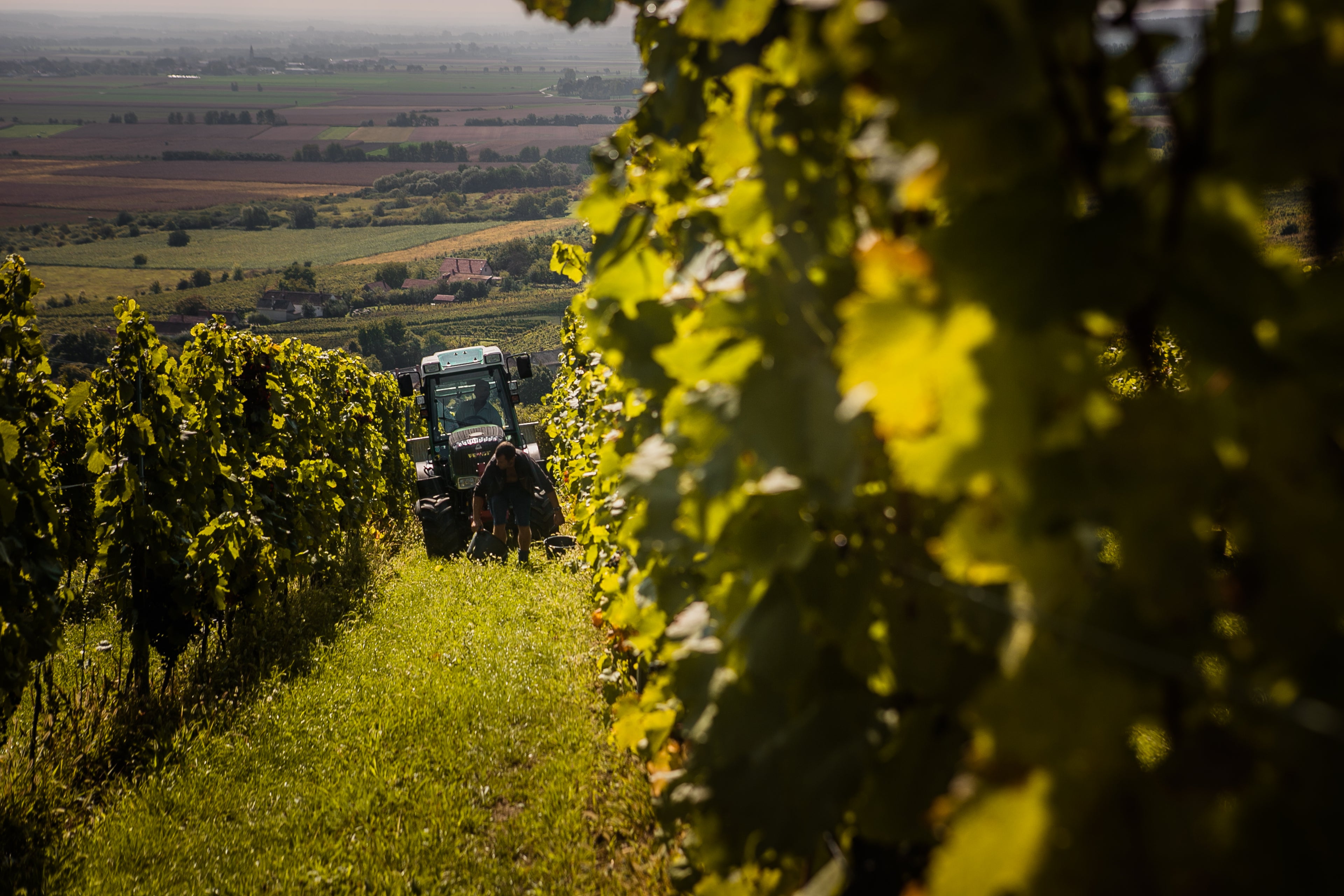
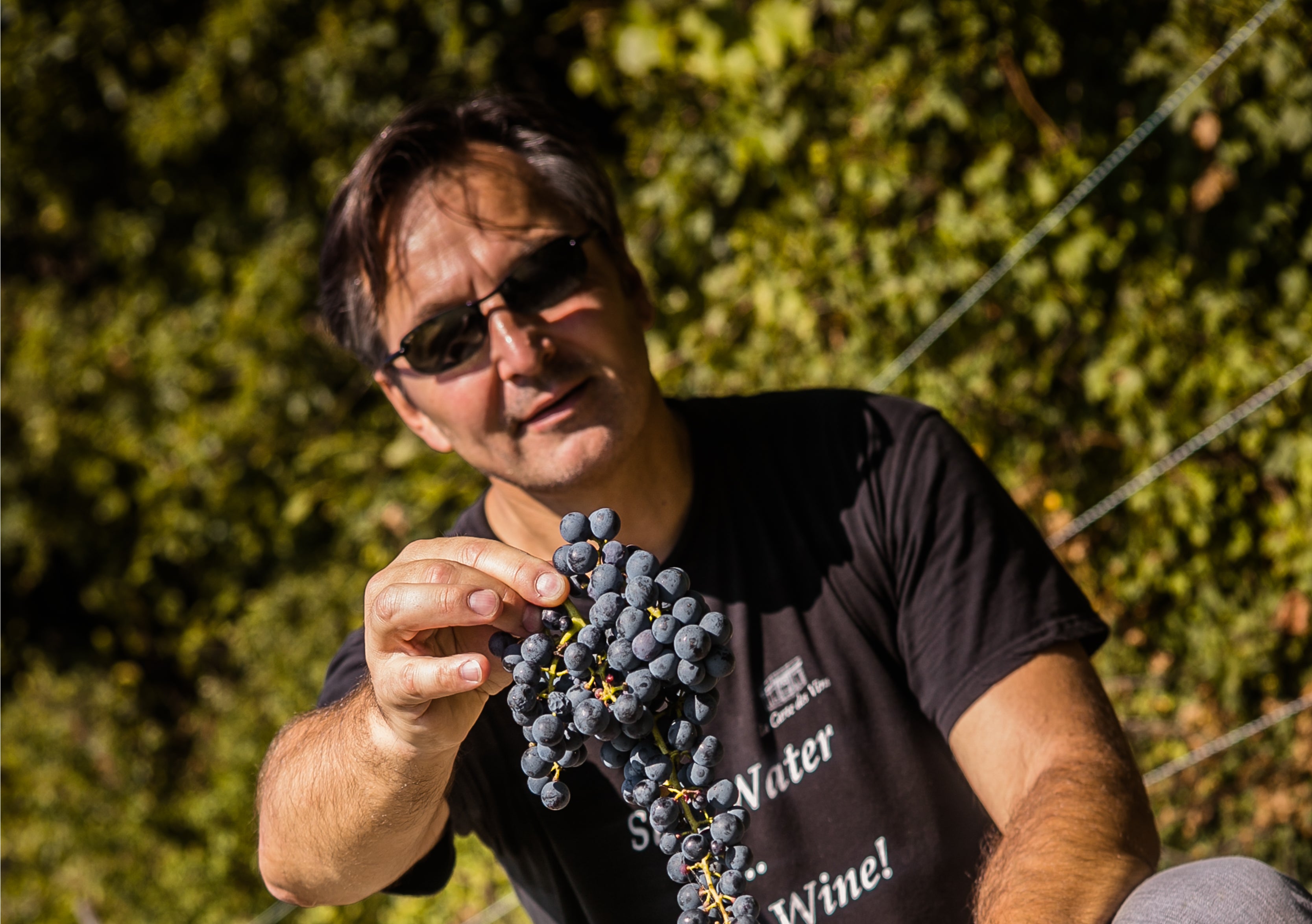
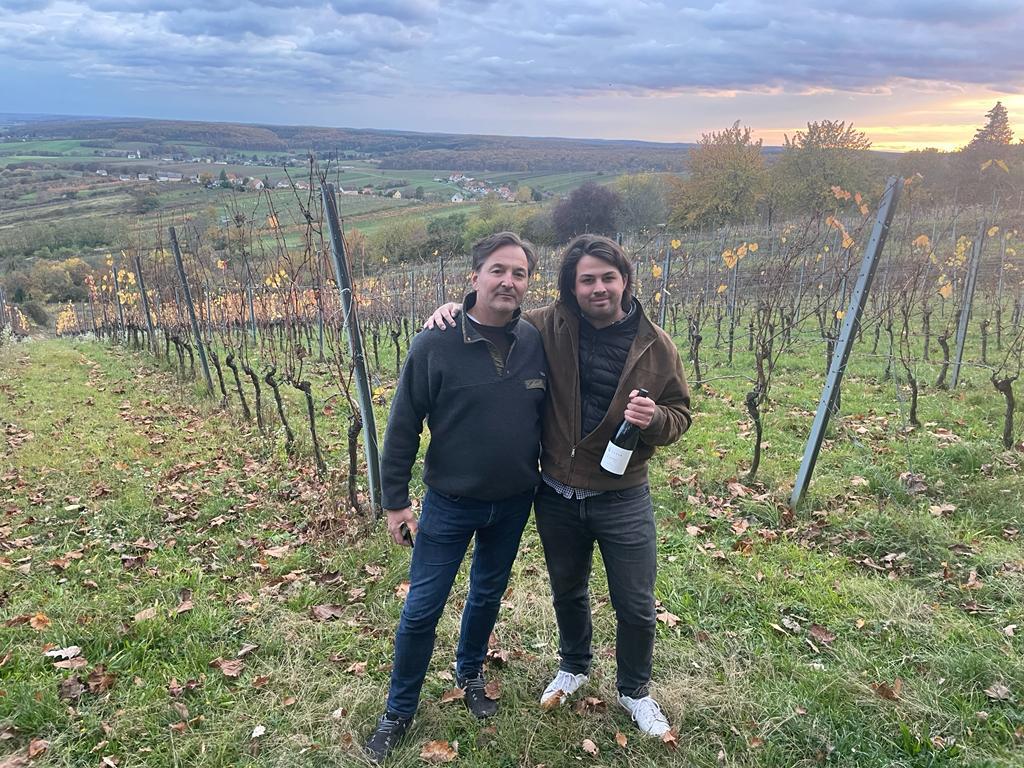
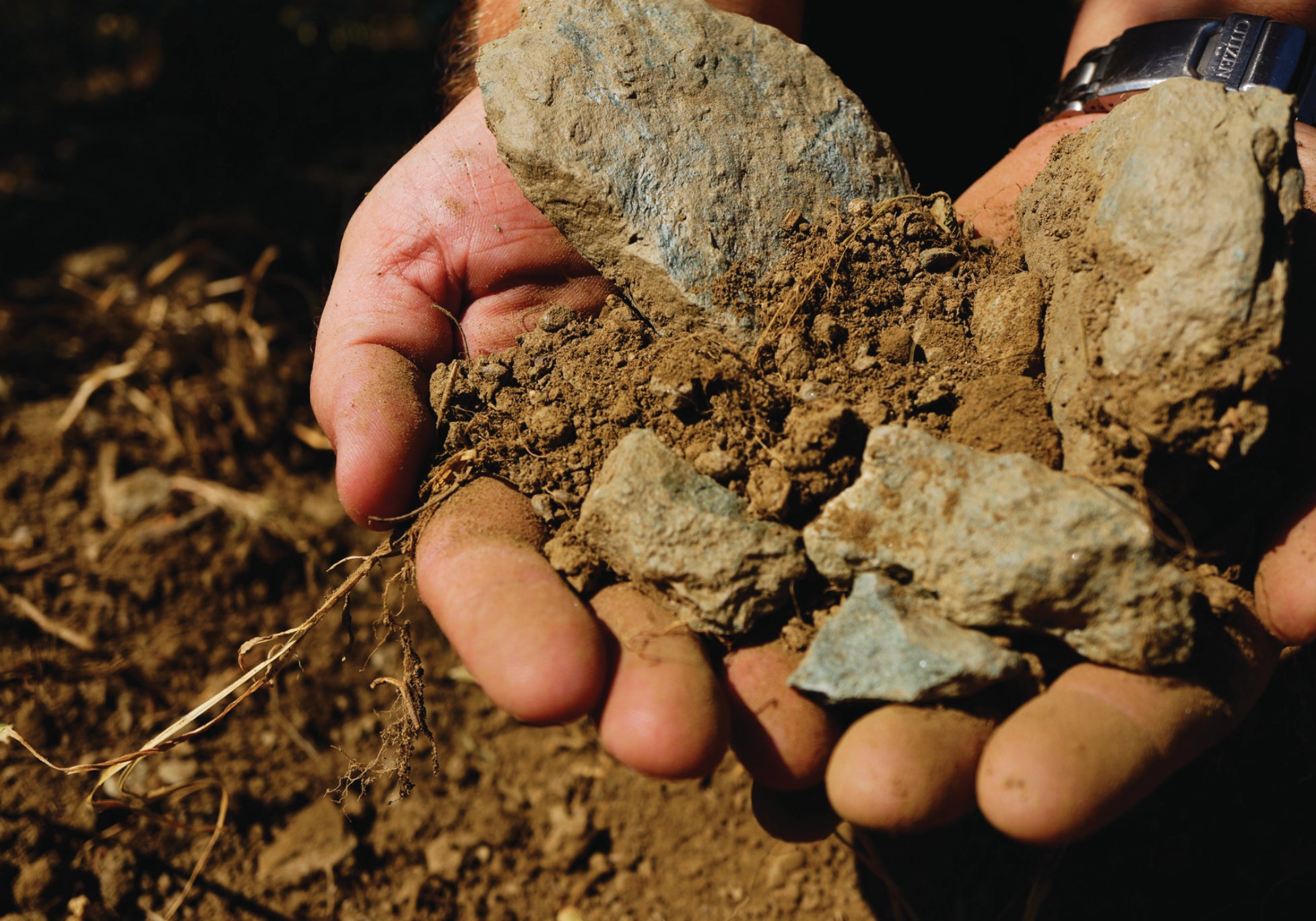
Nador
NADOR crosses boundaries. NADOR primarily stands for the production of wine from Kékfrankos (Blaufränkisch) grapes and comes to market with initial drinking maturity after 5 years of aging and maturation. In 2018, a small vineyard was planted with Furmint, and in a few years, we will be able to welcome a white wine from our own family vines.
"I want to create wines, delicious Kékfrankos from the Eisenberg - but from the other, the Hungarian side. There, NADOR finds excellent climatic conditions and grows on virgin soils that have lain fallow for over 50 years - historical prime locations," said Rainer Garger in 2000, and he began to implement his visions. After nearly two decades of persistent development work, more than 10 vintages have been vinified. The wonderfully elegant Kékfrankos, with their dark spicy note, justify the effort and compensate for the hardships of the past years.
The starting signal for NADOR was in 2001. The best locations of Vashegy, steep and south-facing, lay fallow. Just around 60 years ago, the best wines grew here, but no one wanted to cultivate the steep slopes anymore. This challenged Garger. With the help of his family, a total of 2.7 hectares of vineyards, including the Wanzer site, were gradually acquired, which had to be purchased from more than 20 owners. That was the starting signal for NADOR.
Shortly thereafter, Garger inherited 0.17 hectares of the Stuala site, which his grandmother had tended all her life.
In 2003, Garger finally acquired 0.7 hectares of the Voller site. The vineyards were planted with Blaufränkisch vines from 2003 to 2007.
In 2017, a further 0.5 hectares of the Voller site were acquired and planted with Furmint in March 2018.
More than ten years after the acquisition of the first vineyard, the time had come: In the spring of 2013, a limited 500 bottles of NADOR 2009 came onto the market - all exclusively bottled in magnums.
Since then, NADOR wines have been characterized by their straightforward longevity, and the herbal spiciness runs through their aroma and taste. The Eisenberg is tangible.
The gently hilly landscape is blessed with up to 280 sunny days per year. Nature parks and numerous hiking and cycling trails invite visitors to let their souls dangle in the calm, unexcited landscape. Small-scale agricultural enterprises and vineyards shape the landscape. The region is known for its mineral-spicy Blaufränkisch wines with their unmistakable typicity.
However, a little over 100 years ago, the potential of Blaufränkisch on the Eisenberg was already discovered. According to legend, the Blaufränkisch vines (called "Burgunder" by the locals) were brought to Austria by Francis Stephen of Lorraine in the 18th century. The vines were therefore mistakenly considered French vines and thus referred to as "Burgunder vines."
Today, the Hungarian part of the Eisenberg belongs to the Sopron wine region. The wine region is about 1,500 hectares in size, with more red wine produced than white wine. Among the white grapes, Grüner Veltliner, Chardonnay, Traminer, Zenit, Sauvignon Blanc, and Frühroter Veltliner dominate; among the red varieties, Blaufränkisch, known as Kékfrankos in Hungary, clearly prevails.
"I want to create wines, delicious Kékfrankos from the Eisenberg - but from the other, the Hungarian side. There, NADOR finds excellent climatic conditions and grows on virgin soils that have lain fallow for over 50 years - historical prime locations," said Rainer Garger in 2000, and he began to implement his visions. After nearly two decades of persistent development work, more than 10 vintages have been vinified. The wonderfully elegant Kékfrankos, with their dark spicy note, justify the effort and compensate for the hardships of the past years.
The starting signal for NADOR was in 2001. The best locations of Vashegy, steep and south-facing, lay fallow. Just around 60 years ago, the best wines grew here, but no one wanted to cultivate the steep slopes anymore. This challenged Garger. With the help of his family, a total of 2.7 hectares of vineyards, including the Wanzer site, were gradually acquired, which had to be purchased from more than 20 owners. That was the starting signal for NADOR.
Shortly thereafter, Garger inherited 0.17 hectares of the Stuala site, which his grandmother had tended all her life.
In 2003, Garger finally acquired 0.7 hectares of the Voller site. The vineyards were planted with Blaufränkisch vines from 2003 to 2007.
In 2017, a further 0.5 hectares of the Voller site were acquired and planted with Furmint in March 2018.
More than ten years after the acquisition of the first vineyard, the time had come: In the spring of 2013, a limited 500 bottles of NADOR 2009 came onto the market - all exclusively bottled in magnums.
Since then, NADOR wines have been characterized by their straightforward longevity, and the herbal spiciness runs through their aroma and taste. The Eisenberg is tangible.
The gently hilly landscape is blessed with up to 280 sunny days per year. Nature parks and numerous hiking and cycling trails invite visitors to let their souls dangle in the calm, unexcited landscape. Small-scale agricultural enterprises and vineyards shape the landscape. The region is known for its mineral-spicy Blaufränkisch wines with their unmistakable typicity.
However, a little over 100 years ago, the potential of Blaufränkisch on the Eisenberg was already discovered. According to legend, the Blaufränkisch vines (called "Burgunder" by the locals) were brought to Austria by Francis Stephen of Lorraine in the 18th century. The vines were therefore mistakenly considered French vines and thus referred to as "Burgunder vines."
Today, the Hungarian part of the Eisenberg belongs to the Sopron wine region. The wine region is about 1,500 hectares in size, with more red wine produced than white wine. Among the white grapes, Grüner Veltliner, Chardonnay, Traminer, Zenit, Sauvignon Blanc, and Frühroter Veltliner dominate; among the red varieties, Blaufränkisch, known as Kékfrankos in Hungary, clearly prevails.
Our offers
-
Falu Red 2017
Vendor:NadorRegular price €14,90 EURRegular priceUnit price €19,87 / per l -
 Sold out
Sold outFalu Furmint
Vendor:NadorRegular price €14,90 EURRegular priceUnit price €19,87 / per l -
Ried Wanzer 2015
Vendor:NadorRegular price €35,00 EURRegular priceUnit price / per
1
/
of
4
